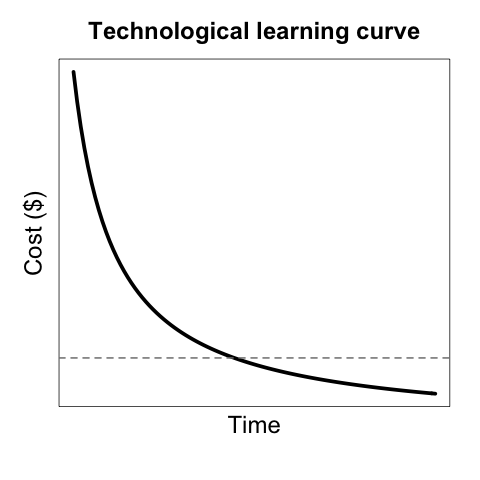The considerable risks of cheap technology
Our current material well-being is due to several key ideas in politics and social organization, and vast improvements in technology. Many expect these improvements to continue in a linear, or perhaps, super-linear trajectory. I do not believe that this optimism is warranted. While technological improvements can increase well-being, they also enable malicious, socially destructive behaviors. We haven't made much progress on the latter, and our main recourse is increasing the amount of monitoring and control, becoming more authoritarian. People want the benefits of the new technologies, but without paying the costs.
An idealized technological (or economic) learning curve is shown in the figure. Over time, the cost of most technologies drops. At some point, the curve falls below the dotted line, which represents a cost threshold where the technology is easily affordable by nearly everyone, including those with malicious intent. These could be groups with extreme political views, apocalyptic or millenarian cults, or just a single mentally unstable individual. The exact nature of their antisocial derangement is irrelevant—any society will contain a small number of such people, and a small number is enough to cause problems when they are enabled by the cheap technology now at hand.

Suppose bioengineering and synthetic biology achieve massive cost reductions. How will you keep these technologies out of the hands that want to do us harm? Even if no one with ill intent uses them, the merely careless will. The natural solution will be increasing regulation, social control, monitoring, and surveillance, all justified by the huge social gains from the technology, and the huge social risks from the bad actors misusing those technologies.
After I first wrote these ideas, I learned that Nick Bostrom had written The Vulnerable World Hypothesis, which elaborates on them in much greater detail.